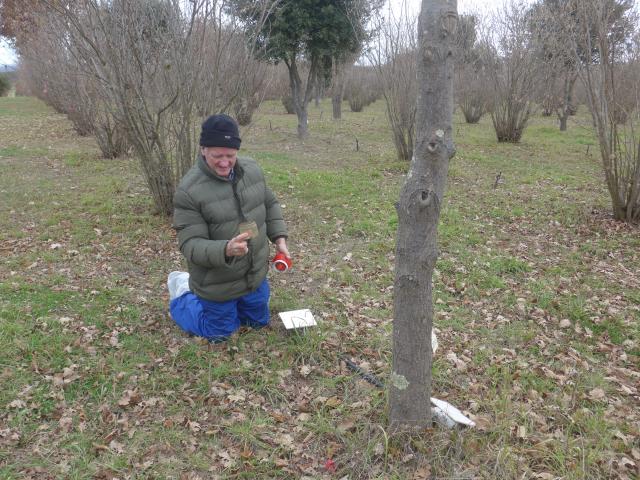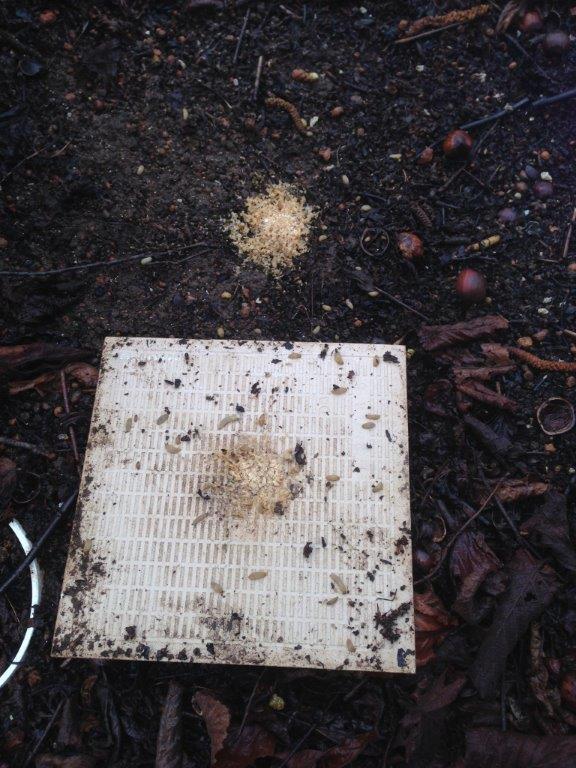Pest monitoring continues - what are we finding in orchards?
We have been conducting regular general ground fauna and disease monitoring in orchards across Australia - 7 in Western Australia, three in NSW and one in Victoria. We now have over 12 months’ worth of information from some orchards. Collating and analysing this data will help provide a picture of the orchard pest profile across the seasons as well as identifying any tree diseases or tree health issues that may be present.
We use pitfall traps and 20cm square tile traps. Some of the pitfall traps are baited with truffle to determine whether this affects the type or number of organisms present, especially Australian truffle beetle which we know has to feed on truffle to complete its development. On some occasions the tile traps are baited with flakey bran which we have found improves the efficiency of the tiles in monitoring slugs. This method has been used for across orchard surveys to see whether there are hot spots as well as in trials.
This monitoring has highlighted that the range and abundance of pests is peculiar for each orchard – a reflection of where the orchard is, orchard characteristics and management methods.
What we have found with the monitoring is:
- Pitfall and tile traps are efficient for monitoring different organisms – pitfall traps for beetles in general, weevils, earwigs, millipedes and springtails; either trap type for slugs and slaters but because they require less maintenance, tile traps would be preferred for these agents.
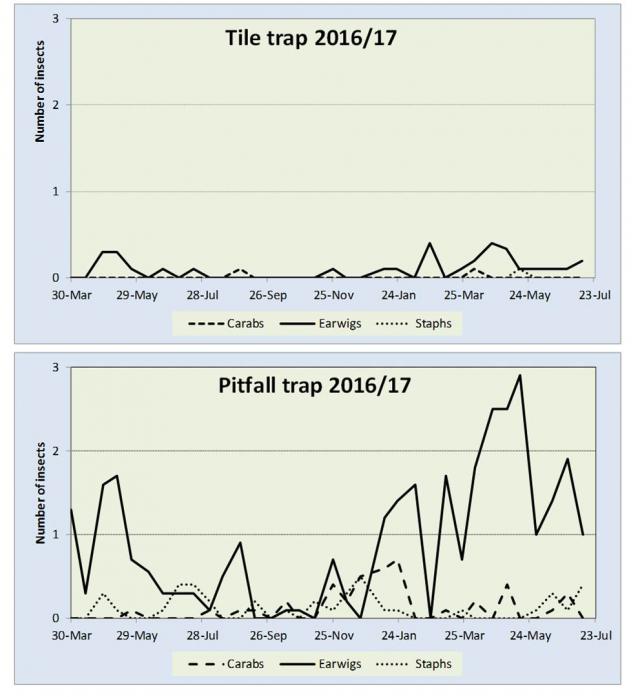
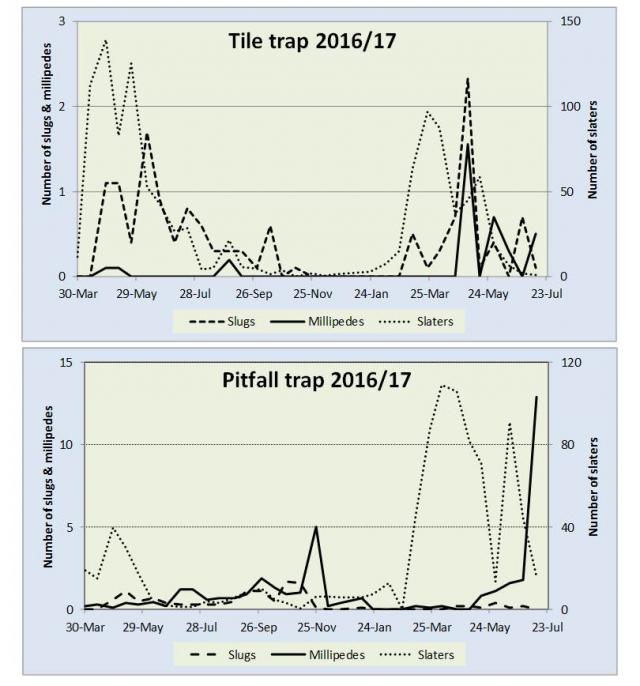
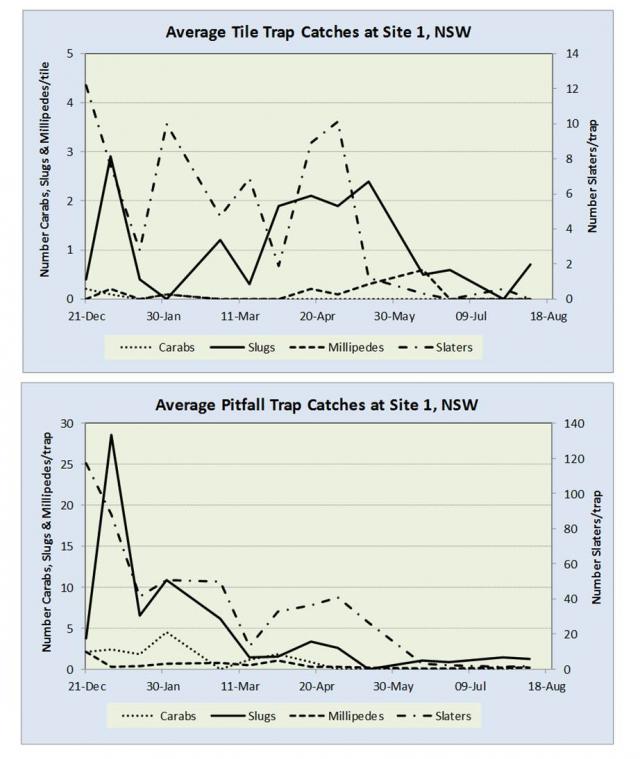
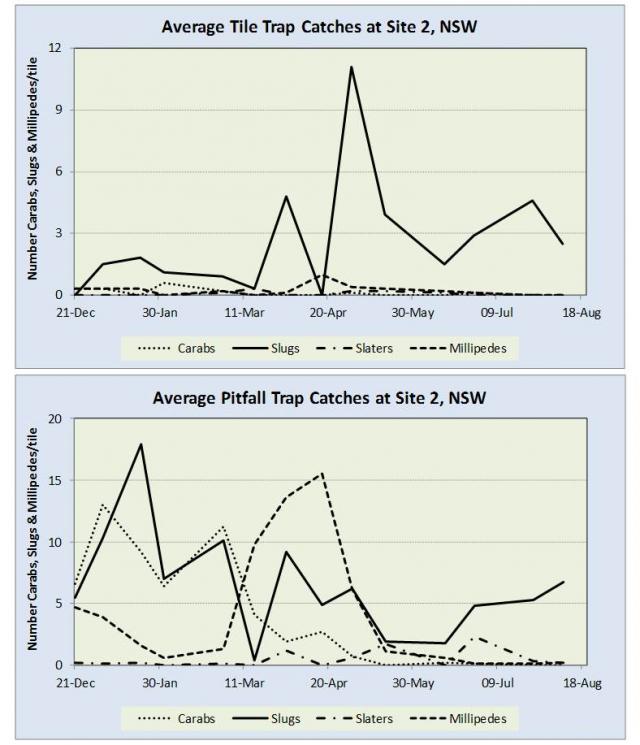
- Slaters and slugs are consistently the main truffle pests identified. Their relative abundance varies across orchards in both eastern Australia and Western Australia. It is important to monitor to know which pest or pests are important in your orchard.
-
The abundance of the range of organisms we monitor for varies throughout the year. This emphasises the importance of continual regular monitoring rather than one off, particularly when monitoring for multiple agents some of which may not be in high numbers at the time of the monitoring.
Knowing what organisms you have in your orchard, if any pests are present and when their numbers peak may allow you to better target control methods. If you are interested on setting up your own pest monitoring in your truffle orchard please contact us for more information.

